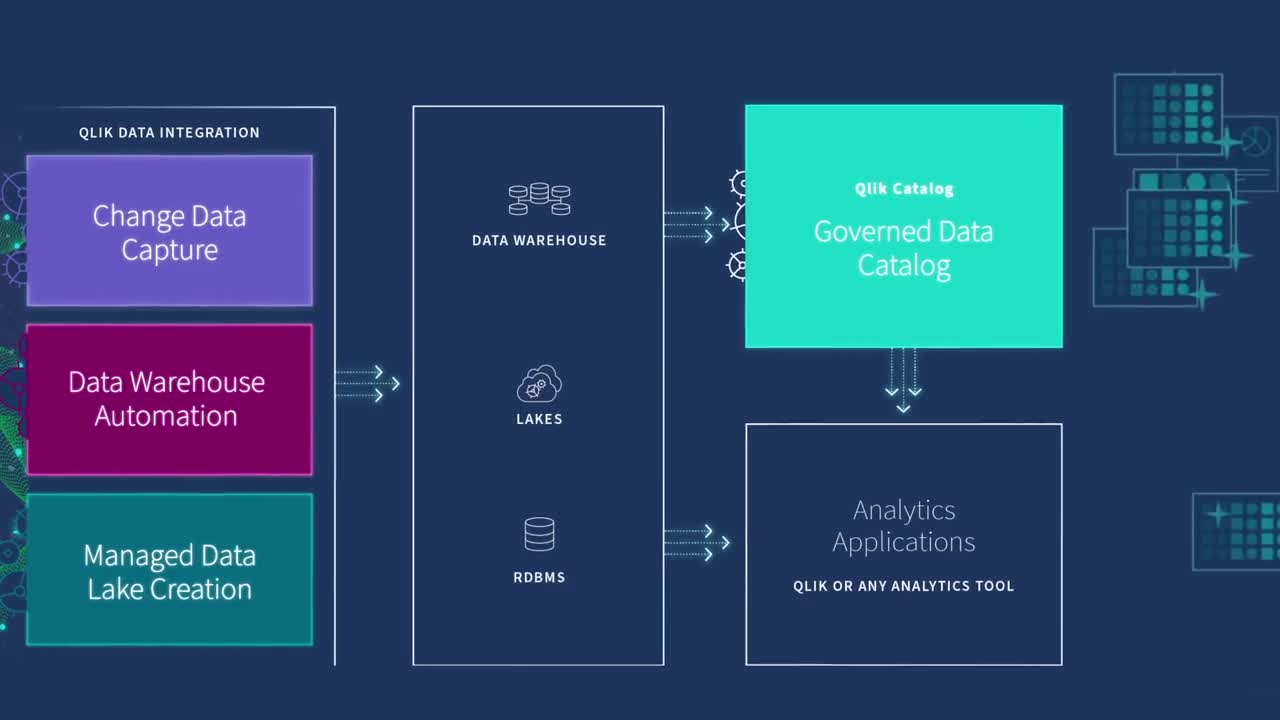At Qlik, we continue to redefine "what is data integration" for the data-driven enterprise, developing innovative tools and technologies that are powerful, easy-to-use, and versatile. Enterprises are collecting and analyzing a greater volume and variety of data than ever before, and they need a data integration tool that allows them to not only work with a variety of data formats and data storage platforms—in dynamic, hybrid computing environments—but also streamline data pipeline development. Qlik Data Integration does just that.

Our universal and real-time data integration platform includes a robust, flexible data ingestion framework, next-generation change data capture technology, automated creation and operation of data warehouses and lakes, and a self-service catalog that offers on-demand access to analytics-ready data. Together, Qlik can give everyone in your business easy access to the latest and most accurate data by vastly accelerating the discovery and availability of real-time, analytics-ready data in the cloud of your choice.
Learn More About Qlik Data Integration

















































